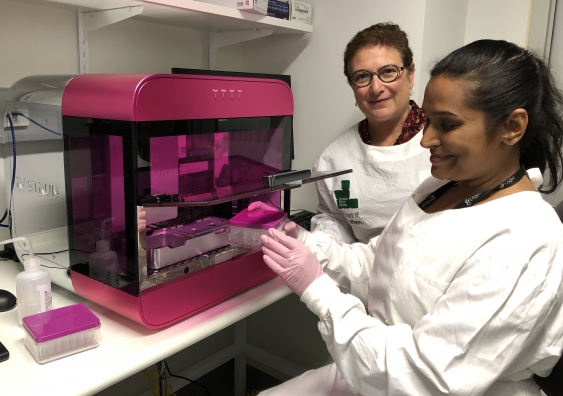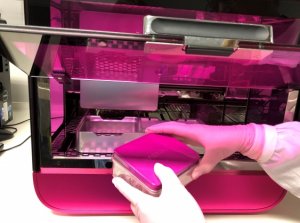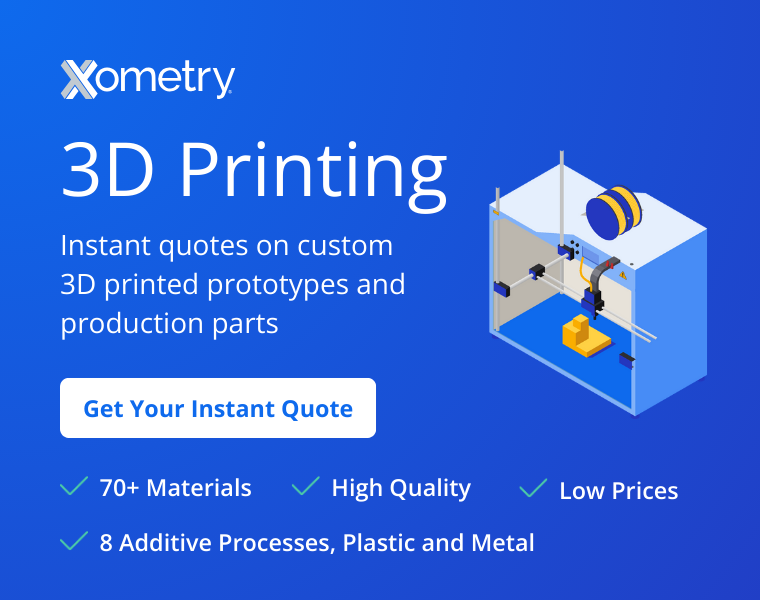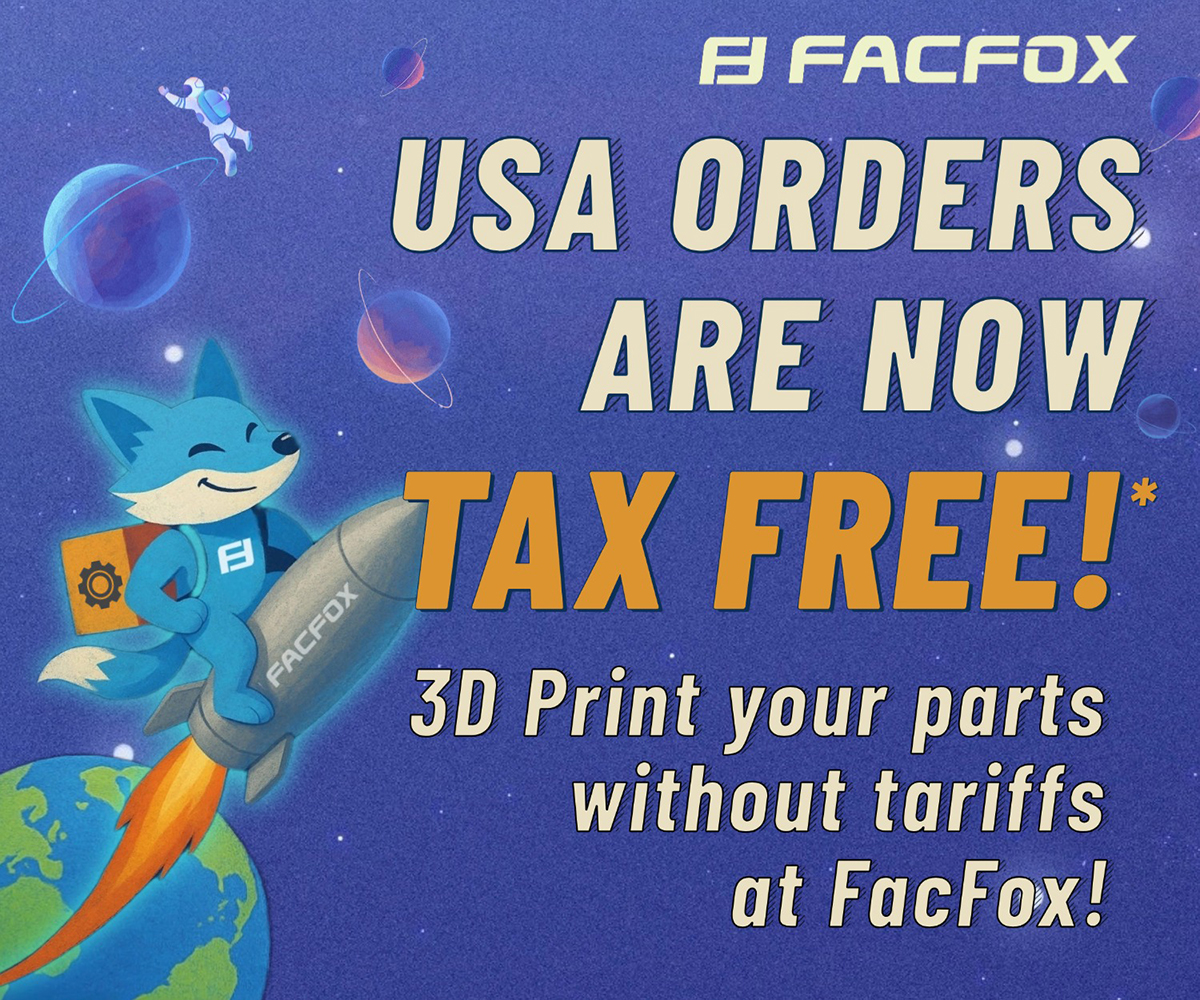 In 2018, Sydney-based startup Inventia Life Science and researchers at the University of New South Wales (UNSW) built Rastrum, a new bioprinter which uses inkjet technology to print human cells at a rapid rate, quickly cultivating realistic tumors for testing cancer drugs.
In 2018, Sydney-based startup Inventia Life Science and researchers at the University of New South Wales (UNSW) built Rastrum, a new bioprinter which uses inkjet technology to print human cells at a rapid rate, quickly cultivating realistic tumors for testing cancer drugs.
Now, the pink printer has won one of Australia’s major design awards, the prestigious 2019 Good Design Award of the Year. Rastrum was co-designed by two leading medical and science academics from the UNSW Sydney’s Australian Centre for Nanomedicine (ACN), Justin Gooding and Maria Kavallaris, as the result of a strong collaboration between the university, the Children’s Cancer Institute and Inventia Life Science.
The prize was awarded to Inventia Life Science at the 61st annual Australian Good Design Awards Ceremony, due to its innovative strategy when developing a machine that can print replicas of tumors that could have a life-changing impact on patients suffering from cancer.
The bioprinter was designed to fight cancer by building 3D cell structures, proteins, and tumor models, which are then used to test a range of therapies by building the cell structure with advanced microfluidics and creating a more accurate structure on which to test immunotherapies. It can produce 1,000 3D cell models in less than six hours – a task that would take more than 50 hours using current manual techniques – so the speed of delivering 3D cell models means researchers can conduct significantly more experiments at the same time, screen thousands of treatment drugs, and make their cancer treatment research much more effective. The company claims that their design has the potential to revolutionize biomedical research and to print tissues, skin, and organs in the future.
“Cancer research is dominated – and in many ways limited – by two-dimensional in vitro cell culture techniques, but 3D printing of cell cultures is much more realistic, revealing important features such as the resistance of cells and tumours to treatment,” said Gooding from UNSW’s School of Chemistry. “So this bioprinter allows cancer researchers to rapidly-produce 3D cultures and build more complex in vitro cancer models than ever before.”
The Victorian Centre for Functional Genomics (VCFG) at the Peter MacCallum Cancer Centre is the first lab to install the Rastrum system and the first to apply this technology to cancer research. According to Kaylene Simpson, Head of the VCFG, the ability to create realistic 3D cell models through an automated and scalable process will vastly accelerate their research progress and advance therapeutic target discovery.
Gooding also said that “…the difference between this printer and other 3D bioprinting technology is that now we have precise control of the types of cells and the environment they grow in, allowing us to create 3D cell models and print artificial tumours. And the type of ink developed for the printer means cell biologists have, for the first time, the capability to precisely deposit multiple cell types in a single 3D cell culture…they will also be able to control the proteins that bind cells together, which is critical because it allows cancer researchers to better understand the variables in cancer formation.”
The printer went through a thorough, rigorous design and testing period from both engineering and cell biology perspectives, with Kavallaris (who is also Head of the Tumor Biology and Targeting Program at the Children’s Cancer Institute) developing the cell biology behind the printer, analysing the viabilities of cells and how quickly they divide, and developing accurate tumor-like environments.

Maria Kavallaris and Lakmali Atapattu working with the 3D bioprinter that won the 2019 Good Design Award of the Year
“The printer is revolutionary in its ability to control the volatile cancer environment that we are working with and reproduce different types of cancers,” claimed Kavallaris. “It gives us enormous opportunities to model real cancer cells. Different tumours survive in different microenvironments – a person doesn’t just have a tumour, but many other cells such as immune cells and accessory cells – living around that tumour that influence that environment and response to therapy.”
Kavallaris stated that one of the main applications at this stage will be for the printer to recreate and mimic solid tumors, and will also have the potential to even recreate blood cell cancers such as leukemia.
“For the first time, we have a machine that can model cancer disease, model therapeutic responses and test new drugs. We can analyse the way drugs are impacting the survival of the tumour and potentially feed that back to clinicians – even test drugs they may not have thought about and reduce exposing patients to undue toxicity. This is an amazing starting point for researchers to use our imaginations and develop cell models to study disease,” she concluded.
The core technology is also being used to explore the longer-term potential to impact areas like the treatment of burns and wounds through clinical bedside-bioprinting. Worldwide, there are many scientists working on cancer research. Universities, like Carnegie Mellon or the University of British Columbia (UBC) Okanagan, have been using bioprinters to produce living biotissues, which could one day be a valuable tool for advancing cancer research and tissue replacement. Hopefully, the Rastrum can also help researchers in Australia tackle the disease which to date is estimated to have risen to 18.1 million new cases and 9.6 million deaths in 2018. This type of advance in biomedicine gives hope to the world.
[Images: Inventia Life Science, UNSW, the Children’s Cancer Institute and the Peter MacCallum Cancer Centre]Subscribe to Our Email Newsletter
Stay up-to-date on all the latest news from the 3D printing industry and receive information and offers from third party vendors.
Print Services
Upload your 3D Models and get them printed quickly and efficiently.
You May Also Like
Reinventing Reindustrialization: Why NAVWAR Project Manager Spencer Koroly Invented a Made-in-America 3D Printer
It has become virtually impossible to regularly follow additive manufacturing (AM) industry news and not stumble across the term “defense industrial base” (DIB), a concept encompassing all the many diverse...
Inside The Barnes Global Advisors’ Vision for a Stronger AM Ecosystem
As additive manufacturing (AM) continues to revolutionize the industrial landscape, Pittsburgh-based consultancy The Barnes Global Advisors (TBGA) is helping shape what that future looks like. As the largest independent AM...
Ruggedized: How USMC Innovation Officer Matt Pine Navigates 3D Printing in the Military
Disclaimer: Matt Pine’s views are not the views of the Department of Defense nor the U.S. Marine Corps Throughout this decade thus far, the military’s adoption of additive manufacturing (AM)...
U.S. Congress Calls Out 3D Printing in Proposal for Commercial Reserve Manufacturing Network
Last week, the U.S. House of Representatives’ Appropriations Committee moved the FY 2026 defense bill forward to the House floor. Included in the legislation is a $131 million proposal for...




































